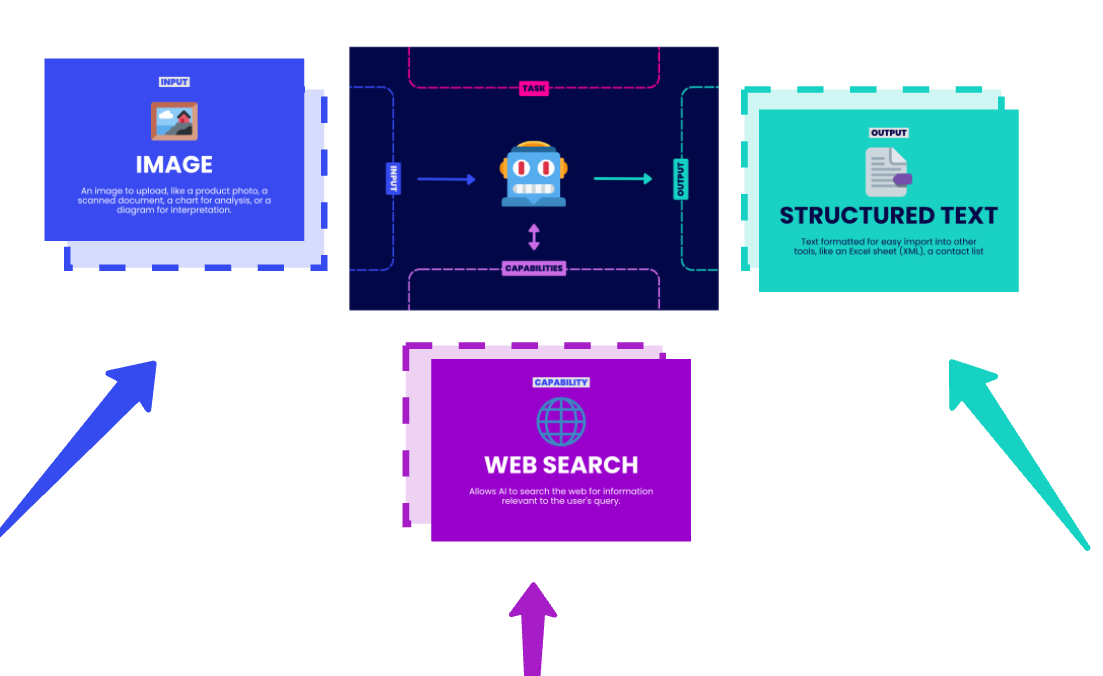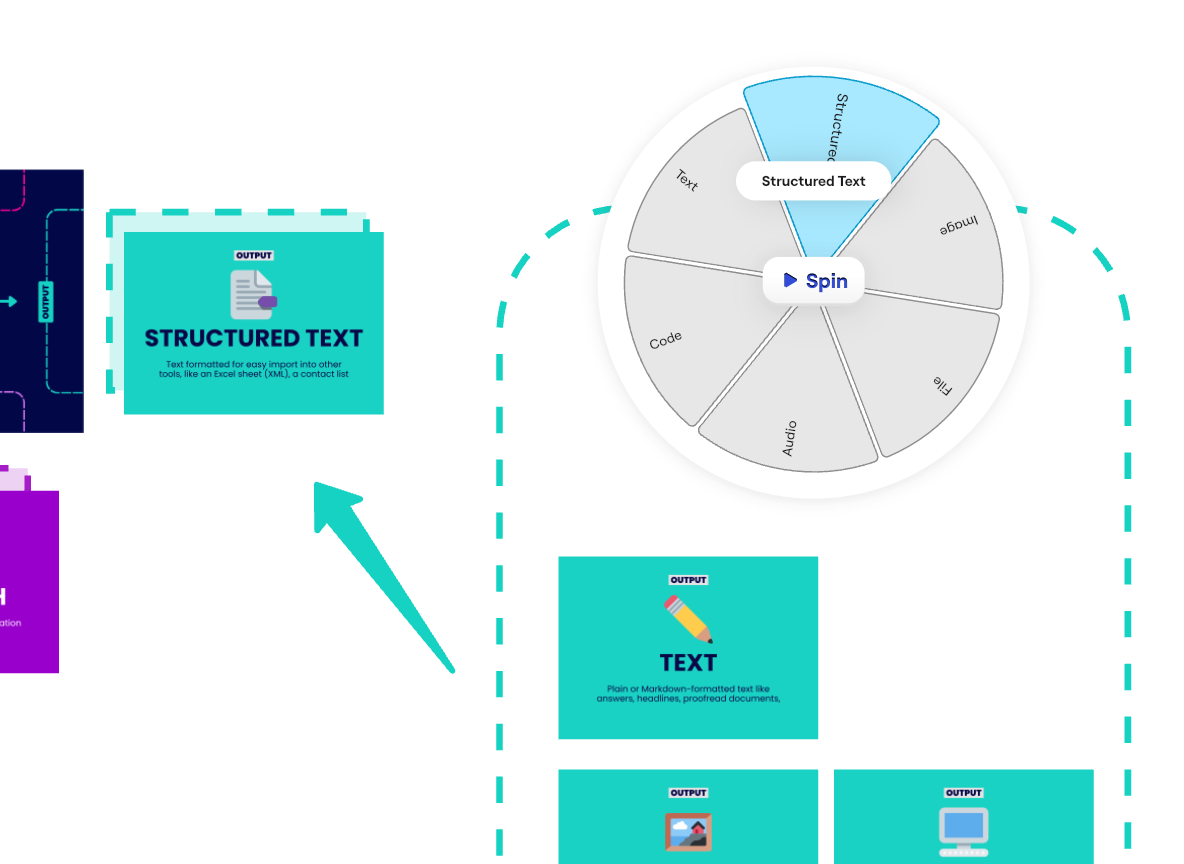Spinner Storming: The Funniest Way to Brainstorm GenAI Use Cases
At the heart of the AI Tinkerers Cards is a simple idea:
to make it easier—and more fun—to understand how modern language models work,
and what they can really do in your daily life or business.
That’s why the central mat of the cards represents the black box of a large language model.
It shows the three core elements involved in every GenAI interaction:
- What you give it (the input),
- What you expect in return (the output),
- And what the model uses to bridge the gap (the capabilities—like summarizing, translating, web searching, etc.)

One of my favorite activities to explore this system is called Spinner Storming.
It’s a fast-paced, playful way to spark ideas for GenAI use cases.
Here’s how it works:
You spin three wheels:
- One for the input (e.g. “an image”),
- One for the output (e.g. “a list of suggestions”),
- And one for the capabilities (e.g. “classification”).

Each spin gives you a new combo to play with.
Your job is to imagine a use case where an AI could take that input, produce that output, using that skill or tool.
It’s random. It’s fun. And it’s surprisingly effective.
Because it pushes you to think beyond the usual chatbots and content generators.
I just released a ready-to-use Miro board with Spinner Storming and other activities.
It’s part of the first Expansion Pack for the AI Tinkerers Cards.
If you’re curious, I recorded a short screencast to show you how it works.
And if you haven’t tried the cards yet, the best way to get started is with the Starter Kit.
It’s just 1 euro, and gives you everything you need to explore the core ideas and run your first workshop.
Whether you're a facilitator, trainer, or just AI-curious,
Spinner Storming is a great way to move from theory to ideas that stick.
Happy tinkering!
How to Bootstrap an AI Training Business
Learn practical strategies for launching your AI training business, from finding your first clients to making your workshops stand out in the market.
Mind Mapping with Cards: A simple way to explore a topic collaboratively
Discover a versatile design pattern using cards and post-it notes to create engaging mind maps that work both in-person and online.